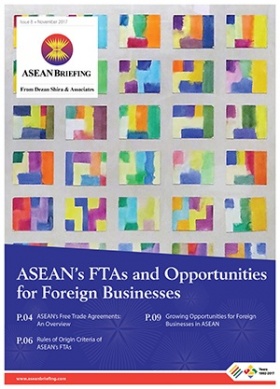India Myanmar Relations – Growing Multifaceted Bilateral Ties
By Yogesh Dubey
Editor’s Note: India’s Prime Minister Narendra Modi made a brief official visit to Myanmar this week. This article was originally published in The Diplomatist Magazine, July 2017, and has been republished with the permission of L.B. Associates (Pvt.) Ltd., a contract publishing house.
Myanmar shares a long land border of over 1600 km (994 mi) with India as well as a maritime boundary in the Bay of Bengal. Four northeastern states: Arunachal Pradesh, Nagaland, Manipur, and Mizoram share an international boundary with Myanmar.
Both India and Myanmar share a heritage of religious, linguistic, and ethnic ties. Myanmar has a substantial population of Indian origin (estimated to be around 1.5 to 2 million). Further, Myanmar is a gateway to Southeast Asia and East Asia – regions with which India is seeking greater economic integration through its ‘Look East’ and ‘Act East’ policy. In fact, Myanmar is the only Southeast Asian country India shares a land boundary with.
Apart from supply of pulses – the possibilities of energy supply from offshore blocks in Myanmar and business opportunities emerging from its opening economy – underpin bilateral relations with India.
India is also expanding on these relations in multifaceted directions. The victory of the National League for Democracy (NLD) (in the November 8, 2015 elections) improved opportunities to strengthen the engagement.
Various institutional mechanisms have infused dynamism into the growing bilateral ties. The first meeting of the India-Myanmar Joint Consultative Commission (JCC) co-chaired by the Indian external affairs minister and Myanmar’s foreign minister was held on July 16, 2015 in New Delhi. The JCC acts as an umbrella mechanism to facilitate interaction between various line ministries in the respective federal governments.
Further, India and Myanmar are trying to strengthen their defense ties. This is part of the Modi government’s ‘Act East’ policy – a more action-oriented variation on the ‘Look East’ policy first formulated under then-premier Narasimha Rao in the 1990s; Act East seeks to strengthen relationships with ASEAN, and East Asia more generally. It is also an acknowledgement of the need for Indo-Myanmar security cooperation.
Both countries share a long maritime boundary in the strategically significant Andaman Sea and the Bay of Bengal apart from the land border, which has led to concerns around transnational issues. Chief among these is the range of insurgent groups in India’s northeast region that borders Myanmar, a security risk for New Delhi that occasionally produces cross-border issues for both sides
China’s rising influence in the world – Belt and Road Initiative
The historical Silk Road was established more than 2000 years ago linking China, Central Asia, and the Arab world. Silk was the most important export from China at that time. Now China proposes to establish a modern network of railways, roads, waterways, air-pipelines, information highways, and utility grids that will link China, Central Asia, West Asia, and South Asia.
China seeks all round cooperation from them. A bilateral cooperation agreement has been signed with Hungary, Mongolia, Russia, Tajikistan, and Turkey. The extension of the China-Iran train connection to Europe is underway. There are also new rail links with Laos and Thailand and high-speed-rail projects to Indonesia.
This initiative, called the One Belt and One Road (OBOR), aims to create the world’s largest platform for economic cooperation, policy coordination, trade and financing collaboration, and social and cultural cooperation.
India is opposed to the Chinese OBOR initiative since the China-Pakistan Economic Corridor (CPEC) passes through Indian territory. CPEC is a flagship project of OBOR, which runs between Xinjiang in China and Gwadar in Balochistan and Gilgit-Baltistan in Pakistan-occupied Kashmir.
OBOR is now renamed as ‘Belt and Road Initiative’ (BRI). India just cannot accept that it ignores India’s core concerns on sovereignty and territorial integrity.
Earlier, in May this year, India ruled out participation in China’s mega BRI summit in Beijing, citing its objections to the CPEC. This was so despite the fact that neighbors Sri Lanka, Nepal, and Pakistan were already attending. The United States, too, made a U-turn and decided to attend the summit. A total of 29 countries attended the two-day summit. This hundreds of billions of dollars initiative is expected to cement China’s dominance over Asia in the coming decades.
Beijing has asked New Delhi to view the Belt and Road Initiative through the prism of economics, and not sovereignty. India is Asia’s third largest economy behind China and Japan. India has one of the world’s busiest shipping lanes in the Indian Ocean.
However, New Delhi is already upset over China’s refusal to allow it entry into the Nuclear Suppliers Group (NSG), although the Xiamen Declaration at the BRICS Summit in China this week acknowledged Pakistan based groups Lashkar-e-Taiba (LeT), Jaish-e-Mohammed (JeM), and the Haqqani network as terrorist outfits associated with the Islamic State – another major sticking point between India and China.
To counteract OBOR or the BRI, India is trying to develop railway connectivity with Bangladesh, Bhutan, Myanmar, and Nepal. The two and half year old BCIM (Bangladesh, China, India, and Myanmar) Economic Corridor has just been revived for consultation and academics.
About Us
The Diplomatist Magazine was launched in October 1996 as the signature magazine of L.B. Associates (Pvt.) Ltd., a contract publishing house based in Noida, a satellite town of New Delhi, India.
India Briefing is published by Asia Briefing, a subsidiary of Dezan Shira & Associates. We produce material for foreign investors throughout Eurasia, including ASEAN, China, Indonesia, Russia, the Silk Road, & Vietnam. For editorial matters please contact us here and for a complimentary subscription to our products, please click here.
Dezan Shira & Associates provide business intelligence, due diligence, legal, tax and advisory services throughout India and the Asian region. We maintain offices in Delhi and Mumbai and throughout China, South-East Asia, India, and Russia. For assistance with India investment issues or into Asia overall, please contact us at india@dezshira.com or visit us at www.dezshira.com.
- Previous Article La Politique en Matière d’IDE de l’Inde en 2017 : les Startups et les Magasins à Marque Unique Avantagés
- Next Article India Hikes Wage Ceiling under Payment of Wages Act












